Wednesday Walk: Strawberry Fields Forever
Savoring summer while preparing for winter, some Wendell Berry wisdom, and eating rainbows in June
Welcome to Willoughby Hills!
If you enjoy what you’re reading, please consider a free subscribtion to receive emails every Wednesday and Sunday plus podcast episodes every two weeks. There are also paid options, which unlock even more features.
As is typical every Wednesday, I’m bring you a smattering of topics that I hope will make you a bit more curious about the world around you and give you something to think about later. I call these Wednesday Walks, as it’s the type of conversation we might have walking down a path in the woods. Shall we take a stroll?
The Joys of June
It’s hard to believe we are already a week in to the month of June! This month is a special one for so many reasons.
For one thing, it means the beginning of Pick Your Own season for my CSA share at Clark Farm. There is nothing quite like waking up early on a Saturday morning and trapping through the fields to choose my own fresh bunch of chives, pick blueberries off the bush, or soon enough, select ripe peppers.
Last week also marked the opening of the farm stand at Hutchins Farm. Hutchins is celebrating 50 years of growing organically this year, which is quite the milestone. It was the first local farm that my wife and I discovered, it’s where we fell in love with the idea of eating seasonally, and it’s the place that connected us to so many other local farms and food producers.
I stopped in on the first day of the season at Hutchins and was excited to be greeted by a fresh harvest of organic strawberries. I eagerly purchased two pints and thought they would make a nice treat for my kids.
After reading Barbara Kingsolver’s Animal, Vegetable, Miracle about two years ago, we have committed to eating as locally as possible for as much of the food as we can. This has meant not only eating food when it’s fresh, but also preserving as much seasonal food as we can through canning, fermenting, and freezing to lessen our dependence on faraway, mono-cropped fields.
So as much as I was excited to pig out on the first fresh strawberries of the season, I instead opted to eat one pint fresh and reserve the other for freezing. Organic frozen strawberries are sold in nearly every supermarket and are often cheaper than buying fresh ones, but they also come from all over the world and need to be trucked here in refrigerated containers- a feat of logistics and a major consumer of energy.
It was bittersweet on the first day of the farm stand to already be preparing for the bleak days of winter, but it’s also the reality of how humans lived for thousands of years. Harvest time wasn’t just a time to indulge, but it was a time to stock up and plan; having gratitude for the bounty of the moment while preparing for the inevitable at the same time.
I feel like that idea is all but lost in our modern culture. We expect instant gratification because, in almost every way, our world is instant now. Any item imaginable can be ordered off of Amazon and arrive within a day, sometimes within a few hours. Foods are no longer seasonal, they’re just on the grocery store shelf and we don’t give a second thought to if something originated around the corner, in California, or in New Zealand or Chile. It’s just there.
In The Sound of Music, there’s a scene where the Von Trapp children have snuck away and are caught by their father when they return home. The kids tell a lie, saying they were picking blueberries rather than confessing to visiting Fräulein Maria. Captain Von Trapp responds in his too cool way, “it’s too early for blueberries.”
It took me a long time to understand this scene. Blueberries have a season?! And how would one even begin to learn what that season is? Captain Von Trapp must have been a botanist or a farmer to have any clue about this, I used to think.
These days, I fully understand, and in doing so, I feel a bit more human and a bit more in touch with the world around me.
Another Berry
If you’ve been reading this newsletter for any length of time, you know that I have become a fervent reader of Kentucky based author Wendell Berry ever since asking Nick Offerman for some Berry recommendations a year or so ago.
Jesse Hirsch (who currently publishes a fascinating agricultural industry newsletter) recently shared with me a Berry letter written to the New York Review of Books. In the letter, Berry is reacting to essays by Alexander Burns and Ian Frazier which were published earlier this year. To Berry, these essays gave an inaccurate portrait of rural America and proposed solutions to rural poverty without understanding the root problem. The New York Review of Books opted not to publish Berry’s letter, so it was picked up by Barn Raiser.
It’s a good read that gets to the heart of the polarization in this country, which manifests itself in our politics, but also may stem from a lack of understanding of each other’s realities. The title of the article “What Liberal Elites Don’t Know About Rural Americans Can Hurt Us” almost sounds like Fox News clickbait, but rather than read it as a dismissal of liberal politics, I saw it as a plea directly to Democrats to be more nuanced in understanding issues and to try to look beyond coastal enclaves when making policies.
Here, for example, is how Berry describes his home:
“I live in Henry County, Kentucky, which I can remember as a part of a thriving agricultural region with many small family-run farms and flourishing local economies. Now, as in every place I know in rural America, the small towns here are dead or dying, much of the farmland (long priced above the reach of farmers) is consigned to toxic, continuously cropped large acreages of corn and soy beans; communities and families are breaking up. The education system prepares our young people to leave, and they are leaving. Other problems are addiction, depression, bad health, poverty, and the boredom with rural life that is induced and expected. At present we are suffering a solar panel land rush and a Bourbon boom land rush, which further increase land prices, go after the best farmland, and turn neighbor against neighbor. I believe I have given a fair representation of the plight of rural America, a land of worsening problems that it did not cause and cannot solve, from which urban America derives its food, clothing, and shelter, plus ‘raw materials.’ For these necessary things rural America receives prices set in urban America. For the manufactured goods returned to it, rural America pays prices set in urban America.”
This is a thread that I’ve tugged at a few times in this newsletter, whether exploring my preconceived notions about visiting West Virginia or investigating why the small town of Gravity, Iowa was once thriving and is today nearly abandoned.
Berry goes on to say:
“The truth is that when this nation chose to eliminate four million farmers (with their families, hired help, buildings, and boundaries) on the advice of the colleges of agriculture, the agricultural bureaucracy, and the agribusiness corporations, it committed a sort of cultural genocide. It destroyed, that is, a necessary mosaic of local agrarian cultures, which made farmers of farmers’ children by teaching them how to farm in their native places. Imperfect as it often was, this was an asset of immeasurable economic worth, easily wiped out, unimaginably difficult to restore.”
It’s a good reminder for people like me, that can comfortably exist in a bit of a liberal, intellectual bubble, to seek out the stories and experiences of those whose lives may differ from mine. All people’s stories are valid, yet we tend to filter life through our own particular lens, which often means missing the bigger picture.
The letter is a short read and worth checking out, as are some of Berry’s longer writings that get at this issue in more detail. The Unsettling of America, though more than 40 years old now, is still a strong blueprint for how we got here.
Taste the Rainbow
Finally, bringing it back to local agriculture, I have been thinking about the joys of this time of year and also meditating on how June is Pride Month.
Here in the Northeast, June is when the colors really start to pop and the varieties of available produce begin to abound. In fact, it’s easy to eat an entire rainbow of colors from a single trip to a farm stand or farmers market, which is harder to do when eating root vegetables all winter.
I think it’s important to acknowledge the very real threats facing the LGBT+ community at the moment and to speak out against these efforts. After years of gains in civil rights, many state legislatures are attempting to make being gay, discussing gay issues, or treating trans people a crime.
In my mind, there’s some beautiful symmetry to Mother Nature (or God, Gaia, or whomever you believe is in charge) offering us a rainbow of bounty during the month when we celebrate the rainbow. There’s symbolism there that I think is hard to ignore.
I affirm my love and support for the LGBT+ community and my family will be marching in Boston’s Pride Parade this weekend. I hope that you can find ways to support the LGBT+ people in your life this month and all year long!
What are your thoughts? Leave a comment below- I love hearing from you!
I publish new issues every Wednesday and Sunday. Sign up to always receive the latest issue and support my work:
Other Wednesday Walks
If you’ve missed past issues of this newsletter, they are available to read here.


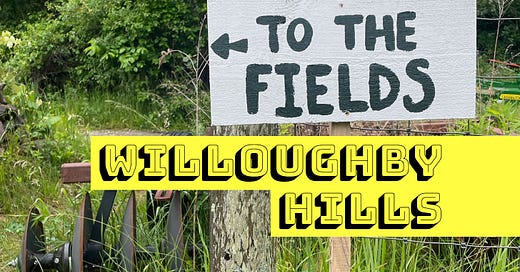


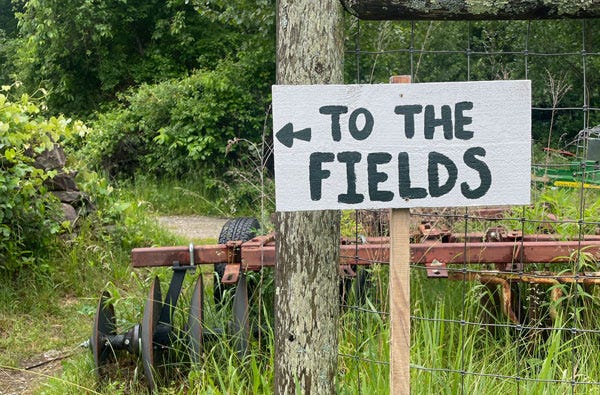
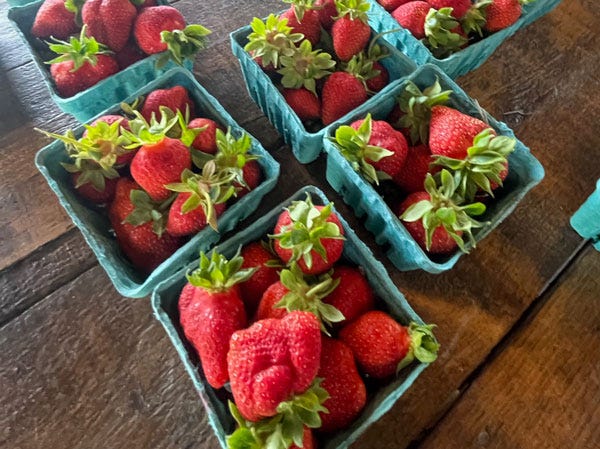
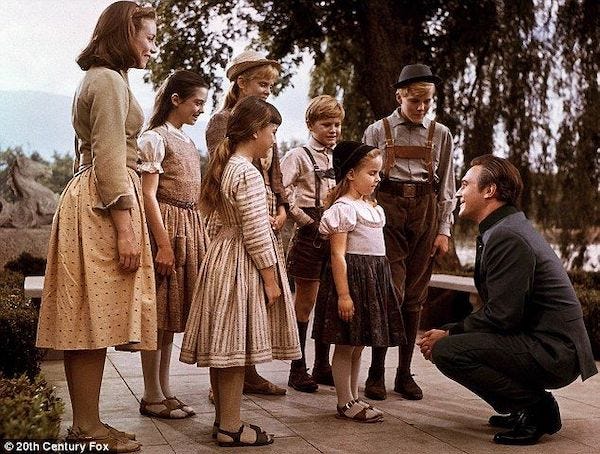
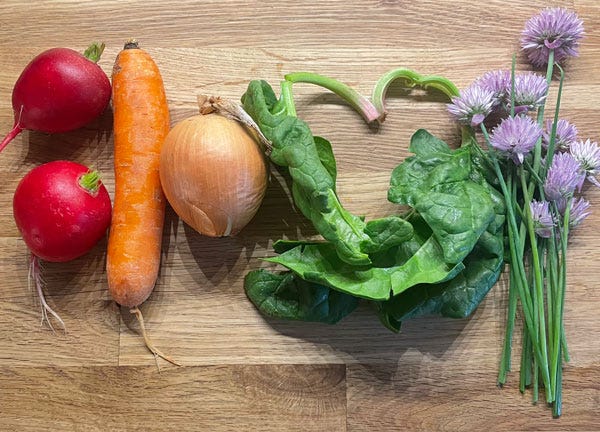
We need to get out to our pick your own that’s 15 minutes away. And can’t wait to walk in our parade also on Saturday (and we have an invite to a very special place here in DC for their celebration on Friday).